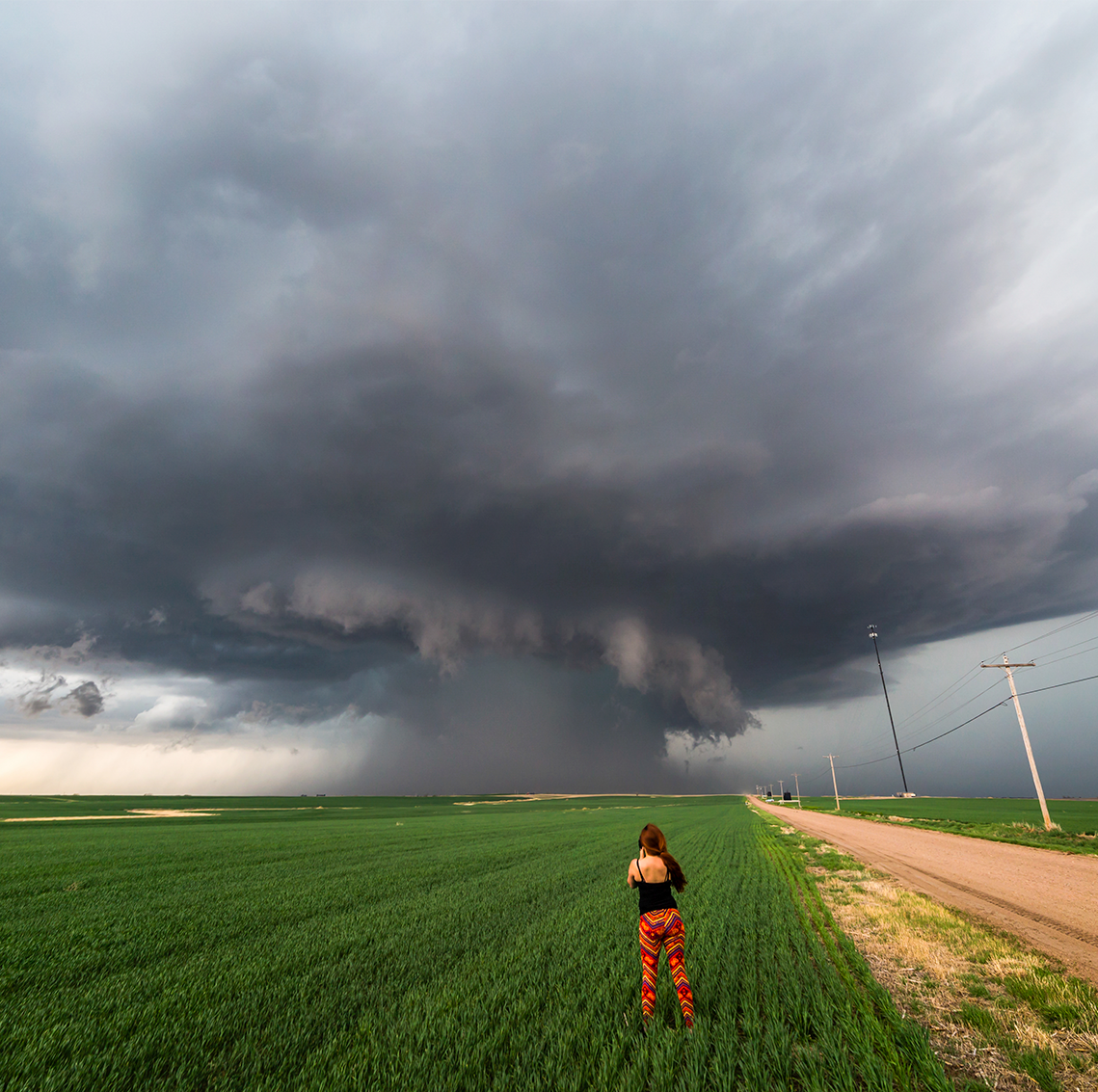These Women Risk Their Lives to Photograph the Most Severe, Dangerous Storms America Has Ever Seen
Tornadoes with 200-mph winds that pulverize everything in their path. Towering monsoon storms that hurl biblical hail. On some level, this generation of storm hunters—raised on the movie Twister— knew exactly what they were getting into. But the larger existential threat of climate change? That was new.
Undaunted by that and by a field long dominated by men, a cadre of women photographers are emerging as vital witnesses to suddenly frightening uncertainties. Some are artists, their portfolios a visual knowledge bank of nature’s immense power. Others take a more scientific approach. “On my team, we all bring different skills to the table,” says biologist and storm chaser Tracie Seimon, PhD, who’s been working with several photographers, including Jennifer Brindley Ubl (featured below), to unlock some stubborn mysteries of violent tornadoes. Her teammates oversee ground logistics, shooting storms from tactical angles. Then Seimon converts the footage into usable data on surface-level wind fields, where tornadoes register their most catastrophic impacts. “It’s a dynamic and creative approach to research,” she says.
There’s even an official group now: Girls Who Chase, founded by storm photographer Jennifer Walton, who’s working to bring visibility and opportunities to women in the field. “Female storm chasers have had to work three times as hard as male chasers for the same accomplishments,” she says. “There are more of us than you realize, and we’re very good at what we do.”
![]()
![These Women Risk Their Lives to Photograph the Most Severe, Dangerous Storms America Has Ever Seen These Women Risk Their Lives to Photograph the Most Severe, Dangerous Storms America Has Ever Seen]() Tornadoes with 200-mph winds that pulverize everything in their path. Towering monsoon storms that hurl biblical hail. On some level, this generation of storm hunters—raised on the movie Twister— knew exactly what they were getting into. But the larger existential threat of climate change? That was new.
Undaunted by that and by a field long dominated by men, a cadre of women photographers are emerging as vital witnesses to suddenly frightening uncertainties. Some are artists, their portfolios a visual knowledge bank of nature’s immense power. Others take a more scientific approach. “On my team, we all bring different skills to the table,” says biologist and storm chaser Tracie Seimon, PhD, who’s been working with several photographers, including Jennifer Brindley Ubl (featured below), to unlock some stubborn mysteries of violent tornadoes. Her teammates oversee ground logistics, shooting storms from tactical angles. Then Seimon converts the footage into usable data on surface-level wind fields, where tornadoes register their most catastrophic impacts. “It’s a dynamic and creative approach to research,” she says.
There’s even an official group now: Girls Who Chase, founded by storm photographer Jennifer Walton, who’s working to bring visibility and opportunities to women in the field. “Female storm chasers have had to work three times as hard as male chasers for the same accomplishments,” she says. “There are more of us than you realize, and we’re very good at what we do.” |
![]()
![]()
![]()
![]()
![]()
![]()
![]()
![]()
![]()
![]()
![]()
![]()









